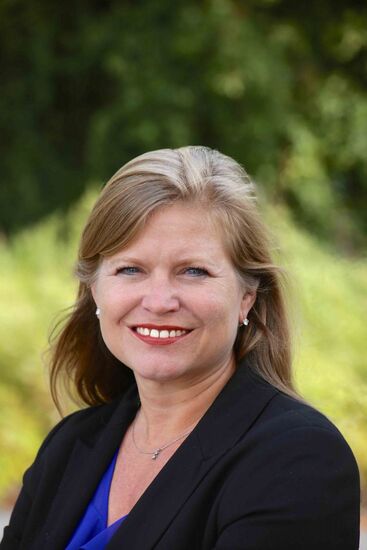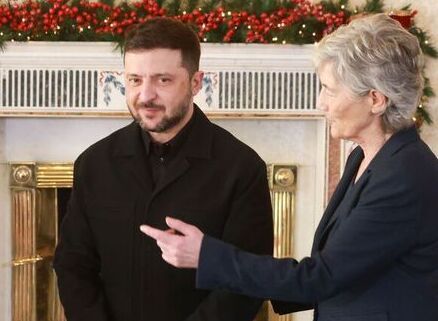Grace operates in strange ways, especially in explaining a revived appreciation of religion on the part of one of the most successful figures in the Celtic Tiger era. Moya Doherty, who came from the border town of Pettigo in Donegal, has gone on to such remarkable success in theatrical, television, and radio direction and production, as to become one of the richest women in Ireland. She and her husband, John McColgan, founded and produced Riverdance, the musical, dance, and theatrical phenomenon that grew from an appearance during the interval of the 1994 Eurovision Song Contest in Dublin to a premiere the following year in Dublin's Point Theatre to appearances around the globe with universal acclaim and extraordinary revenue. Riverdance and U2 were the central cultural features of the Celtic Tiger era, as measured by the worldwide critical approval they received and the extraordinary fortunes they amassed. The recognition they brought to Ireland reinforced and reinvigorated the confidence, indeed, almost arrogance, with which the newly wealthy Irish approached the rest of the world. Alas, that is all gone now with the Irish having to stand in line for European largesse and waiting with unwarranted expectations that the forthcoming visit of President Obama will serve like a magic wand to solve their problems. At any rate, Moya recently underwent what seems to have been a return to the Catholic Church which she forsook as a teenager. She recounted her experience in an article on St. Patrick's Day in the Irish Times. What appealed to her was the great difference between a southwest Florida church at which she had attended Mass and her experience as a child in Pettigo. The beginning of her alienation was her being rebuked, when seven years of age, by the parish priest because she and her friend were "whispering giddily." Speaking in Irish, he identified her as "the headmaster's daughter." In her own words "Catholicism lost me on that grey day in 1960's Ireland," although it would take another nine years, when she was a teenager, before she finally separated. Among the unpleasant memories of her childhood Catholicism was her having made her First Communion in a dress sent years earlier by an American relation and that had been used previously by her sisters. Other things about her childhood religious memories that disturbed her were the smells of "damp", "incense", and "fear". Her theatrical future would be apparent from her distaste for those attending that church with their "Brylcream pasted heads, shouldersa gathering shelf for dandruff, shirt collars held stiff by decades of dust and dirt, fingernails black from the bog, rosary beads knotted around each digit." She seemed merciless in her lack of sensitivity to the faithful of that time. The men had "Woodbine-stained fingers" with "one knee nestled into their caps", as they flanked "the rear of the church" with closed eyes and "lips moving at rapid speed" during prayers. As distasteful to her were the wives, who had black hats pinned down "on grey hair-netted buns, support stockings safe in strong sturdy Sunday shoes." But in twenty-first century Florida, things are quite different. The renowned producer-director, sitting on a padded seat in the front row, was appreciative of an octagonal designed church, where the altar would be in the center or, in her own terms "theatre-in-the round." She was especially struck by the white-jacketedand black-trousered ushers, much like you would "see on Broadway." Her theatrical sense made her especially appreciative of the principal celebrant of the Mass, a warm-hearted priest who looked like "a cross between Friar Tuck and Saint Patrick," whose self-depreciating humor brought laughter from the congregation. Other appealing features of the service were altar boys "cloaked in simple white cassocks, hair gleaming and neatly cut, black shoes polished brightly" and "a band of 11 women circling the altar...ready to take up their role as Minister of the Eucharist." It is wonderful that a clean and comfortable church, whose liturgy would rival any Broadway extravaganza, and humor-laced homilies, would appeal to her. Obviously, those parents in Ireland, who of late have been turning their children's first communions into celebrity type occasions with hairdressings, artificial sun tans, expensive dresses, and sometimes chauffeured limousines and even horse-drawn carriages, would feel very comfortable there. They might even find reason to bring their children to church a few more times again before their confirmations. On the other hand, the cold, damp churches, their less than fastidiously attired congregations, and stern clergy, might well have much more in common with the unkempt, unwashed, and odorous crowds that were the audience that listened to Christ'sSermon on the Mount, or who hailed him as he entered Jerusalem on the first Palm Sunday. As for dandruff covered shoulders, nicotine-stained fingers, and bog-dirtied finger nails turning someone off of religion, one could scarcely imagine her undertaking the washing of the feet of the disciples as Christ did prior to the Last Supper. One is glad Moya Doherty has returned to the church. However, one hopes that her faith will grow much more intense than what seems to be something designed for the Celtic Tiger. Better the Faith that was able to endure persecution, famine, emigration, and generous self sacrifice as missionaries to the distant corners of the world than one based primarily on its theatrical quality.








